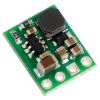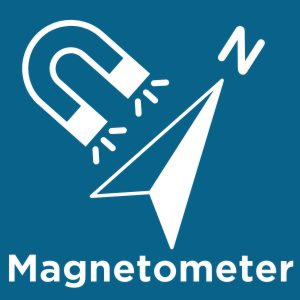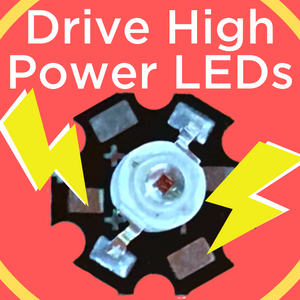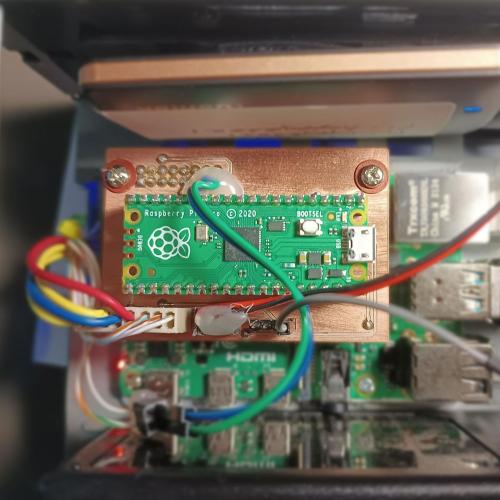Pololu 3.3V, 300mA Step-Down Voltage Regulator D24V3F3
Available with a lead time
Expect dispatch between Dec 23 and Dec 26
Quantity Discounts:
- 10+ $14.01 (exc GST)
- 25+ $13.57 (exc GST)
Note: Pololu recommends Pololu's newer 600 mA D36V6Fx family of step-down voltage regulators over this product. They offer a wider 4 V to 50 V operating voltage range and lower quiescent current, and they can generally be used as drop-in replacements for this product (they use the same PCB, just populated with different parts). Please also consider Pololu's 500 mA D24V5Fx and 1 A D24V10Fx families for synchronous alternatives that offer similar functionality with much lower dropout voltages and higher efficiencies at light loads. All of these newer families also have more output voltage options available.
 |
 |
Pololu step-down voltage regulator D36V6Fx/D24V6Fx/D24V3Fx next to a 7805 voltage regulator in TO-220 package. |
|---|
These buck (step-down) voltage regulators generate lower output voltages from input voltages as high as 42 V. They are switching regulators (also called switched-mode power supplies (SMPS) or DC-to-DC converters) and have a typical efficiency between 80% to 90%, which is much more efficient than linear voltage regulators, especially when the difference between the input and output voltage is large. This regulator is available with a fixed 3.3 V, 5 V, 9 V, or 12 V output, and two versions are available for each voltage, one with a 300 mA maximum output current (D24V3Fx) and one with a 600 mA maximum output current (D24V6Fx).
The regulator has short-circuit protection, and thermal shutdown prevents damage from overheating. The board does not have reverse-voltage protection.
Features
- Input voltage: [output voltage + dropout voltage] to 42 V (see below for more information on dropout voltage)
- Fixed 3.3 V, 5 V, 9 V, or 12 V output (depending on regulator version) with 4% accuracy
- Maximum output current: 300 mA or 600 mA (depending on regulator version)
- 1.25 MHz switching frequency
- 2 mA typical no-load quiescent current (20 µA typical quiescent current with SHDN = LOW)
- Integrated over-temperature and over-current shutoff
- Small size: 0.5" × 0.4" × 0.1" (13 mm × 10 mm × 3 mm)
 |
 |
Using the Regulator
Connections
The buck regulator has four connections: shutdown (SHDN), input voltage (VIN), ground (GND), and output voltage (VOUT).
The SHDN pin can be driven low (under 0.3 V) to turn off the output and put the board into a low-power state that typically draws 20 µA, and it can be driven high (above 2.3 V) to enable the board. If you do not need to use the shutdown feature, the SHDN pin can be directly connected to VIN to permanently enable the board. You should not leave this pin disconnected as this can result in unpredictable behavior.
The input voltage, VIN, should exceed VOUT by at least the regulator’s dropout voltage (see below for graphs of dropout voltages as a function of the load), and you must ensure that noise on your input does not exceed the 42 V maximum. Additionally, please be wary of destructive LC spikes (see below for more information).
The output voltage, VOUT, is fixed and depends on the regulator version: the D24VxF3 version outputs 3.3 V, the D24VxF5 version outputs 5 V, the D24VxF9 version outputs 9 V, and the D24VxF12 version outputs 12 V.
The four connections are labeled on the back side of the PCB, and they are arranged with a 0.1" spacing along the edge of the board for compatibility with solderless breadboards, connectors, and other prototyping arrangements that use a 0.1" grid. You can solder wires directly to the board or solder in either the 4×1 straight male header strip or the 4×1 right-angle male header strip that is included.
 |
Typical Efficiency and Output Current
The efficiency of a voltage regulator, defined as (Power out)/(Power in), is an important measure of its performance, especially when battery life or heat are concerns. As shown in the graphs below, these switching regulators have typical efficiencies of 80% to 90%.
Note that the above graphs apply to both the 300 mA and 600 mA versions, which is why the x axis extends to 600 mA. You should not expect to get more than 300 mA from the 300 mA versions (D24V3Fx). These graphs and ones below do not apply to Pololu's newer 500 mA D24V5Fx buck regulators, which have different operating characteristics, including much lower dropout voltages.
Typical Dropout Voltage
The dropout voltage of a step-down regulator is the minimum amount by which the input voltage must exceed the regulator’s target output voltage in order to ensure the target output can be achieved. For example, if a 5 V regulator has a 1 V dropout voltage, the input must be at least 6 V to ensure the output is the full 5 V. The following graphs show the dropout voltages for the eight D24V3Fx and D24V6Fx regulators as a function of the output current:
As you can see from the last two graphs, the dropout voltage of the low-current 9 V and 12 V versions (D24V3F9 and D24V3F12) spikes as the output current nears the 300 mA limit. For similar regulators with much lower dropout voltages, please consider Pololu's newer 500 mA D24V5Fx buck regulators.
LC Voltage Spikes
When connecting voltage to electronic circuits, the initial rush of current can cause voltage spikes that are much higher than the input voltage. If these spikes exceed the regulator’s maximum voltage (42 V), the regulator can be destroyed. In Pololu's tests with typical power leads (~30" test clips), input voltages above 20 V caused spikes over 42 V. If you are connecting more than 20 V or your power leads or supply has high inductance, Pololu recommends soldering a 33µF or larger electrolytic capacitor close to the regulator between VIN and GND. The capacitor should be rated for at least 50 V.
More information about LC spikes can be found in Pololu's application note, Understanding Destructive LC Voltage Spikes.
People often buy this product together with:
 | Pololu 3.3V, 500mA Step-Down Voltage Regulator D24V5F3 |
 | Pololu 3.3V, 600mA Step-Down Voltage Regulator D24V6F3 |
 | Pololu 5V, 600mA Step-Down Voltage Regulator D24V6F5 |
Dimensions
| Size: | 0.4" × 0.5" × 0.1"1 |
|---|---|
| Weight: | 0.5 g1 |
General specifications
| Minimum operating voltage: | 3.8 V2 |
|---|---|
| Maximum operating voltage: | 42 V |
| Maximum output current: | 300 mA |
| Output voltage: | 3.3 V |
| Reverse voltage protection?: | N |
| Maximum quiescent current: | 2 mA3 |
Identifying markings
| PCB dev codes: | reg04b |
|---|---|
| Other PCB markings: | 0J7034 |
Notes:
- 1
- Without included optional headers.
- 2
- For small loads; input voltage must be at least 4.3 V to get the full 300 output.
- 3
- While enabled (SHDN = HIGH) with no load. Current draw is approximately 20 µA when SHDN = LOW.
File downloads
Step-Down Voltage Regulator D24VxFx drill guide (23k dxf)
This DXF drawing shows the locations of all of the board’s holes.
Exact shipping can be calculated on the view cart page (no login required).
Products that weigh more than 0.5 KG may cost more than what's shown (for example, test equipment, machines, >500mL liquids, etc).
We deliver Australia-wide with these options (depends on the final destination - you can get a quote on the view cart page):
- $3+ for Stamped Mail (typically 10+ business days, not tracked, only available on selected small items)
- $7+ for Standard Post (typically 6+ business days, tracked)
- $11+ for Express Post (typically 2+ business days, tracked)
- Pickup - Free! Only available to customers who live in the Newcastle region (must order online and only pickup after we email to notify you the order is ready). Orders placed after 2PM may not be ready until the following business day.
Non-metro addresses in WA, NT, SA & TAS can take 2+ days in addition to the above information.
Some batteries (such as LiPo) can't be shipped by Air. During checkout, Express Post and International Methods will not be an option if you have that type of battery in your shopping cart.
International Orders - the following rates are for New Zealand and will vary for other countries:
- $12+ for Pack and Track (3+ days, tracked)
- $16+ for Express International (2-5 days, tracked)
If you order lots of gear, the postage amount will increase based on the weight of your order.
Our physical address (here's a PDF which includes other key business details):
40 Aruma Place
Cardiff
NSW, 2285
Australia
Take a look at our customer service page if you have other questions such as "do we do purchase orders" (yes!) or "are prices GST inclusive" (yes they are!). We're here to help - get in touch with us to talk shop.
Have a product question? We're here to help!
Videos
View AllGuides
PiicoDev Magnetometer- Getting Started Guide
How to Drive High Power LEDs – 3W Aluminum Backed Star LEDs
The Maker Revolution
How to Use DC Regulators/Converters
Projects
Wireless QI Phone Charger Powered by Raspberry Pi
mmPi-Pico HAT
Solar Charging Station
Makers love reviews as much as you do, please follow this link to review the products you have purchased.


























Product Comments